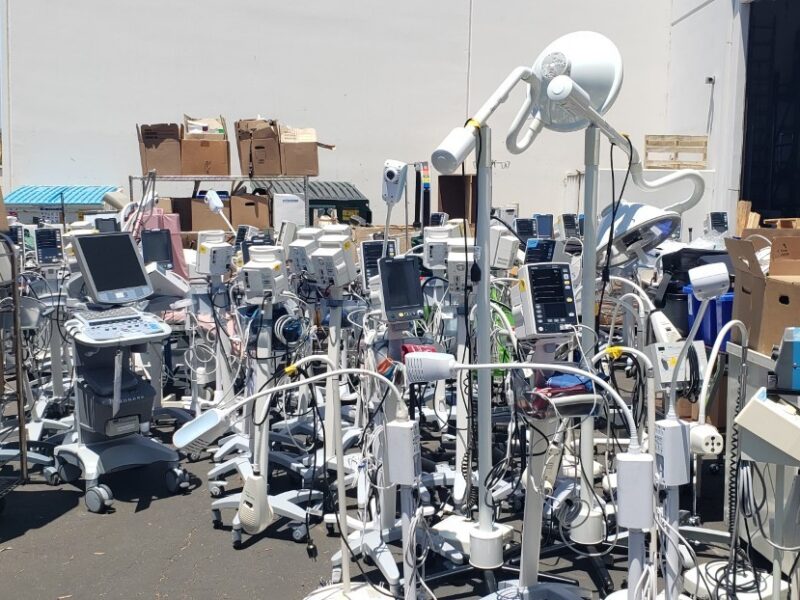Health care as a whole can do a better job at managing the level of e-waste recycled every year. That starts with best practices in how we manage the life cycle of surplus medical equipment. Almost all medical equipment has a power cord, battery, circuit board, hard drive or monitor screen. All these items combined are what make up a medical equipment device which is considered universal waste.
Globally computer screens and monitors amounted to close to 7 million metric tons of E-waste generated in 2019. Cell Phones and other small items made up about 5 million metric tons generated for the same calendar year. In 2021, human beings will discard an estimated 57.4 million tonnes of phones, computers, appliances, tv’s and medical equipment (approximately 63.3 million U.S. tons) of E-waste — outweighing the the world’s heaviest human construction, the Great Wall of China.
This is a 23% increase from 2014 and is the equivalent of 350 cruise ships the size of the Queen Mary 2. This is why the World Economic Forum is calling for these items to be repaired or recycled instead of discarded.
Here is in the United States we generated about 6.918 million metric tons of E-waste in 2019. The US only recycled 15% of its e-waste in 2019.
It is hard to determine exactly how much was tied to healthcare. But if you include computers and medical equipment disposed of annually by every healthcare facility in the US. It would be quite a staggering number. We can do much better managing our surplus medical equipment and electronics in healthcare. The average person in the US generates 19.4Kg of E-waste annually where the same person in Norway averages 28.5Kg. Annually on average only 17% of E-waste is officially recycled globally.
Donation of medical equipment is another great channel to keep end of life medical equipment out of the E-waste downstream. This becomes a problem for the poorer countries where surplus medical equipment is donated. The medical equipment donated must be in working condition. Always being checked by an HTM professional before shipment. If there are no parts available or support to service the device. It is most likely that piece of equipment will end up in a landfill, be incinerated or stolen by greedy politicians.
Some of the largest E-waste offenders are the Asian countries. With western nations not far behind. Some of the top E-waste generators are
- China-7.2 Million Metric Tons
- US -6.3 Million Metric Tons
- Japan – 2.1 Million Metric Tons
- India- 2.0 Million Metric Tons
- Germany 1.9 Million Metric Tons
Many E-waste companies follow strict guidance by organizations like R2 and E Stewards. Which strive to obtain a zero-landfill policy for all E-waste. Having a strong E-waste policy is a first step in managing an ever-increasing E-waste surplus. If strong policies are not implemented now, it is anticipated our E-waste output will double by the year 2030.
When a hospital’s medical equipment or computers reaches their End of Life cycle. It is best to work with an E-waste company that understands the special requirements of managing EPHI data and downstream recyclers. To ensure all E-waste is managed correctly and decrease or flatten the millions of metric tons we bring in annually.
All of this drives ZRG Medical to coordinate with hospital supply chain staff to remove surplus medical equipment in the safest, easiest, most efficient, and environmentally conscious manner. Feel free to contact us for more information. https://bit.ly/2VupuZj


 Healthcare Needs Better Surplus Managment
Healthcare Needs Better Surplus Managment

